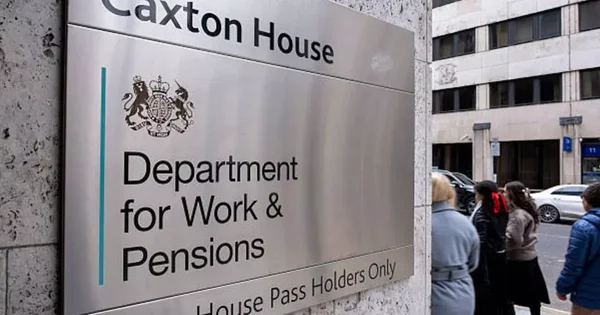Learn this before you buy a property
Buying a second property in the UK? Prepare for the SDLT surcharge that significantly increases your overall stamp duty bill when buying a second home.
Since April 2016, additional property purchases have faced higher stamp duty rates. The rules and rates discussed here primarily apply to England and Northern Ireland; Scotland and Wales have different systems.
Understanding these surcharges is essential for buy-to-let investors, holiday home buyers, and anyone helping family onto the property ladder.
The rules contain important exceptions and potential planning opportunities worth knowing.
Our Pie tax app helps calculate your exact stamp duty liability instantly, saving you from costly mistakes. Or if you’re just here to get to grips with it all, let’s break it down!
What exactly is this extra tax on second homes?
Second home stamp duty (also known as stamp duty on second homes) is an additional 3% tax on top of regular stamp duty when you buy an extra property.
It applies to any residential property over £40,000 that isn’t replacing your main home.
The government introduced this surcharge in April 2016 to cool the buy-to-let market and help first-time buyers. This tax is officially called Duty Land Tax (SDLT) in England and Northern Ireland, and Land Transaction Tax in Wales.
Scotland and Wales have similar systems but with different names (LBTT and LTT) and some varying rules. When considering the surcharge, it's important to check how much stamp duty you might need to pay on a second home, as rates and thresholds can vary and accurate calculation is essential.

When does the higher rate apply?
You’ll pay the surcharge when buying any residential property while already owning more than one property anywhere in the world. The additional rate applies if you own more than one property at the time of purchase.
Buy-to-let investments always trigger the extra tax, as do holiday homes.
Many people get caught out when helping a family member buy property. If your name is on the deeds whether you’re gifting a deposit or acting as a guarantor for a family member you could still face the additional rate surcharge.
Even if your other property is abroad, HMRC still counts it when deciding if the additional rate apply.
I once advised a client who was shocked to discover his Spanish villa triggered the surcharge on a small UK investment flat. In this scenario, the additional rate applies because he was buying an additional property while already owning another. The additional £9,000 tax hadn’t featured in his calculations.
In summary, buying an additional property almost always triggers the higher SDLT rate unless a specific exemption applies.
Current second home stamp duty rates
These are the current second home rates, also known as higher SDLT rates or the second home surcharge. The rates add 3% to each band of regular stamp duty, resulting in higher SDLT rates for second homes compared to standard residential rates. 3% on the purchase price of residential properties valued £0-£250,000 (versus 0% for primary residences).
5% on the portion of the purchase price between £250,001-£925,000 (versus 2%). 8% on the portion between £925,001-£1.5 million (versus 5%). 13% on any portion above £1.5 million (versus 10%). These second home rates apply specifically to residential properties. Different tax rates and SDLT rates may apply to non-residential or mixed-use properties.
SDLT rates and tax rates can change, so buyers should always check the latest home rates before making a purchase. These rates are current as of April 2023 – always check for updates before buying.

Exemptions and special cases
If you’re replacing your main home, you might escape the surcharge but timing matters, and the exemption generally applies when the new property becomes your primary residence. Properties under £40,000 don’t face the extra 3% charge.
Mobile structures like caravans and houseboats usually don’t count for the surcharge. Properties with “granny annexes” follow special rules that can be tricky to navigate. Annexes may be treated as additional dwellings, which can affect stamp duty rates and eligibility for reliefs. Companies and trusts buying property face different considerations, often with higher rates. Non residential rates apply to commercial properties or properties that do not qualify as standard dwellings.
Exemptions may also apply if you own only one property, or in cases involving civil partnership or inherited property, subject to specific rules. For example, inherited property may not trigger the surcharge if certain conditions are met, and married couples or those in a civil partnership are treated as a single unit for stamp duty purposes.
Timing and refund rules
You have a 36-month window to replace your main home without paying the surcharge.
If you paid the extra Stamp Duty on the purchase of a new home or new property before selling your original home or previous home, you can reclaim stamp duty by claiming a refund after your previous main residence is sold within 36 months. The refund process applies to the additional stamp duty paid on the purchase of your new property.
To apply for a refund, you must submit a claim to HMRC. This is done by filing an SDLT return promptly after purchase, and the refund process is linked to this filing. Claiming a refund must be done within 12 months of the filing date of your SDLT return or within 12 months of the date your previous main residence was sold, whichever is later.
Exceptional circumstances, such as actions by a public authority or government imposed restrictions preventing the sale of your previous home, may allow you to apply for a refund even if the usual deadlines are missed. HMRC may consider these exceptional circumstances, including public authority preventing the sale, as valid reasons for extending the refund period.

Recent changes to be aware of
The temporary stamp duty holiday that ended in September 2021 still affected second home buyers.
Since April 2021, non-UK residents pay an additional 2% surcharge on top of everything else when purchasing property in England and Northern Ireland. Stamp Duty Land Tax is the relevant tax for these transactions. The additional duty on second homes applies to both UK residents and non-UK residents, but non-UK residents face higher surcharges.
First-time buyer relief remains available but doesn’t help with second properties. This relief is only available to a first time buyer who has never owned a property before.
The government regularly reviews these taxes, so Stamp Duty Land Tax tax rates could change with economic shifts. Tax rates for Stamp Duty Land Tax can change frequently, so buyers should check the latest rates before purchasing.
Final Thoughts
Second home stamp duty significantly impacts property investment costs in the UK.
Careful timing and understanding the replacement rules can save you thousands in unnecessary tax. Complex situations like mixed-use properties or company purchases always warrant professional advice.
Remember that stamp duty is just one piece of the property tax puzzle consider capital gains and income tax too.

Pie tax: Simplifying Second Home Stamp Duty Tax
You don't need to tackle the SDLT surcharge maze alone with the right tools at your fingertips. The UK's first personal tax app, Pie tax, offers instant stamp duty calculations tailored to your specific circumstances.
Our property tax assistants guide you through exemptions and timing rules, potentially saving thousands in unnecessary charges.
We help you plan transactions optimally and store documentation securely for any future refund claims. Fancy seeing how it works? Just explore the Pie tax app today.









